my app architecture, quite common:
Please explain me if I have list of Entities, for example
@Entity(tableName = TABLE_NAME)
class Item constructor(
@PrimaryKey(autoGenerate = false)
var id: Long = 0L,
@TypeConverters(ListToStringConverter::class)
var eventDescription: List<String> = emptyList(),
@TypeConverters(DateConverter::class)
var date: Date = Date(),
var rate: Int ?= null)
Picture explanation:
Currently I do (according to picture above):
mLiveDatagetLiveData from Repository- callback
refreshFromDataBase() mLiveData.addSourcefromLiveDataof DataBase - what causes that Android View is updated quickly- callback
refreshFromNetwork() - Rest updates DatabaseTable
- Database insert causes that LiveData add pushes changes to the View
Formulation of the problem
What is the best practice for 5 step - a moment when new data comes and I have to replace old data with the freshest?
Currently I'm using RxJava, Room, Kotlin and I'm using in step 3 nested Rx.Single which is very ugly spagetti code.
like
disposable = usecase.getDataFromNetwork()
.subscribeOn(Schedulers.io())
.observeOn(AndroidSchedulers.mainThread())
.subscribeBy(onSuccess = {
val itemsList = it
dataBase.deleteAllItems()
.subscribeOn(Schedulers.io())
.observeOn(AndroidSchedulers.mainThread())
.subscribeBy (onComplete = { dataBase.insertNewItems(itemsList)
.subscribeOn(Schedulers.io())
.observeOn(AndroidSchedulers.mainThread())
.subscribeBy(onComplete = {
// Process complete
}, onError = {
...
})
}
}, onError = {
...
})
}, onError = {
...
})
Ugly spagetti code.
QUESTIONS
- Should I wipe all Table before inserting new Items? Livedata listen to the changes of List, so whenever anything changes (some item updated, some inserted, some removed) view will be updated
- Under Circumstances where all my Streams are Single (reason: they dispose by itself when onComplete), how to chain them sequentially in oder to restrict one stream rule?
